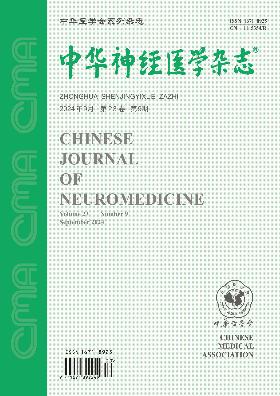Efficacy and safety of carotid endarterectomy in restenosis after carotid stenosis stenting
Q4 Medicine
引用次数: 0
Abstract
Objective To evaluate the efficacy and safety of carotid endarterectomy (CEA) in restenosis after carotid stenosis stenting. Methods In a prospective study, 29 patients with restenosis after carotid artery stenosis stenting, admitted to our hospital from January 2017 to December 2017, were selected as study group; and 29 patients with moderate or severe carotid artery stenosis matched with age, gender and course of disease and admitted to our hospital at the same period were selected as control group. All of them were treated with CEA, and patients in the study group also had their stents removed. The patients in the two groups were compared in terms of surgical indicators, efficacy, perioperative complications and incidence of adverse events during follow-up. Results The success rate of surgery was 100% in both groups; the intraoperative flow rate was 10.34% in the control group and 17.24% in the study group without statistically significant difference (P>0.05). There were no significant differences in carotid artery occlusion times and operation times between the two groups (P>0.05). The lengths of skin incision and carotid artery incision in the study group were significantly longer than those in the control group (P 0.05). The incidence of perioperative complications was 10.34% in the study group, and the incidence of adverse events was 10.34% in the follow-up period, and 3.45% and 6.90% in the control group, respectively, without statistically significant differences (P>0.05). Conclusions CEA is effective in the treatment of restenosis after carotid stenosis stenting. Because of stent dissection, the skin and carotid artery incision lengths are relatively long, but it does not increase the surgery risks and complications. Key words: Carotid endarterectomy; Stent molding; Carotid artery stenosis; Curative effect; Safety颈动脉内膜切除术治疗颈动脉狭窄支架置入术后再狭窄的疗效和安全性
目的评价颈动脉内膜切除术(CEA)治疗颈动脉狭窄支架置入后再狭窄的疗效和安全性。方法采用前瞻性研究方法,选取2017年1月至2017年12月我院收治的颈动脉狭窄支架置入术后再狭窄患者29例作为研究组;选取29例与年龄、性别、病程相匹配且同期住院的中重度颈动脉狭窄患者作为对照组。所有患者都接受了CEA治疗,研究组的患者也切除了支架。比较两组患者的手术指标、疗效、围手术期并发症及随访期间不良事件发生率。结果两组手术成功率均为100%;对照组和研究组术中血流率分别为10.34%和17.24%,差异无统计学意义(P < 0.05)。两组患者颈动脉闭塞次数及手术次数比较,差异无统计学意义(P < 0.05)。研究组皮肤切口和颈动脉切口长度明显长于对照组(P < 0.05)。研究组围手术期并发症发生率为10.34%,随访期间不良事件发生率为10.34%,对照组为3.45%,对照组为6.90%,差异无统计学意义(P < 0.05)。结论CEA是治疗颈动脉狭窄支架置入术后再狭窄的有效方法。由于支架夹层,皮肤和颈动脉切口长度相对较长,但并未增加手术风险和并发症。关键词:颈动脉内膜切除术;支架成型;颈动脉狭窄;疗效;安全
本文章由计算机程序翻译,如有差异,请以英文原文为准。
求助全文
约1分钟内获得全文
求助全文
来源期刊

中华神经医学杂志
Psychology-Neuropsychology and Physiological Psychology
CiteScore
0.30
自引率
0.00%
发文量
6272
期刊介绍:
 求助内容:
求助内容: 应助结果提醒方式:
应助结果提醒方式:


